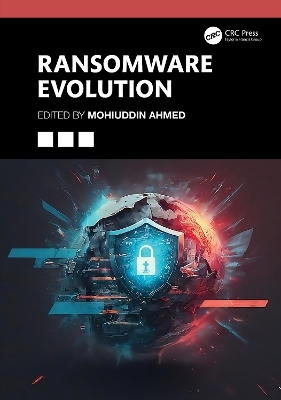
Ransomware Evolution
CRC Press (Verlag)
978-1-032-74271-7 (ISBN)
- Noch nicht erschienen (ca. Januar 2025)
- Versandkostenfrei innerhalb Deutschlands
- Auch auf Rechnung
- Verfügbarkeit in der Filiale vor Ort prüfen
- Artikel merken
Ransomware 3.0 is an emerging threat in which cybercriminals target critical infrastructures and tamper with the data stored on computing devices. Unlike in traditional ransomware attacks, cybercriminals are more interested in the actual data on the victims' devices, particularly from critical enterprises such as government, healthcare, education, defense, and utility providers. State-based cyber actors are more interested in disrupting critical infrastructures rather than seeking financial benefits via cryptocurrency. Additionally, these sophisticated cyber actors are also interested in obtaining trade secrets and gathering confidential information. It is worth noting that the misinformation caused by ransomware attacks can severely impact critical infrastructures and can serve as a primary weapon in information warfare in today’s age. In recent events, Russia's invasion of Ukraine led to several countries retaliating against Russia. A ransomware group threatened cyber-attacks on the critical infrastructure of these countries. Experts warned that this could be the most widespread ransomware gang globally and is linked to a trend of Russian hackers supporting the Kremlin's ideology.
Ensuring cyber safety from ransomware attacks has become a national security priority for many nations across the world. The evolving variants of ransomware attacks present a wider and more challenging threat landscape, highlighting the need for collaborative work throughout the entire cyber ecosystem value chain. In response to this evolving threat, a book addressing the challenges associated with ransomware is very timely. This book aims to provide a comprehensive overview of the evolution, trends, techniques, impact on critical infrastructures and national security, countermeasures, and open research directions in this area. It will serve as a valuable source of knowledge on the topic.
Dr. Mohiuddin Ahmed has been educating the next generation of cyber leaders and researching to disrupt the cybercrime ecosystem. His research is focused on ensuring national security and safeguarding critical infrastructures from cyber terrorists. Mohiuddin has edited several books and contributed articles to The Conversation. His research publications in reputed venues attracted more than 5000 citations with a h-index of 28 and have been listed in the world's top 2% of scientists for the 2020-2023 citation impact. Mohiuddin secured several external and internal grants worth more than $1.7 Million and has been collaborating with academia and industry. He has been regularly invited to speak at international conferences and public organizations and interviewed by the media for expert opinion. He is also a Fellow of the Higher Education Academy, UK.
Preface. About the Editor. List of Contributors. Acknowledgements. SECTION I: History of Ransomware Groups. Chapter 1: A Brief History of Ransomware. Chapter 2: A closer look at the famous Ransomware Groups. SECTION II: Ransomware in Healthcare. Chapter 3: Actor Behaviour, Notable Incidents in Critical Infrastructures and Risks to the Health Sector. Chapter 4: Ransomware: Impacts in Healthcare Critical infrastructure. Chapter 5: The Evolution of Ransomware in Healthcare Organizations. SECTION III: Ransomware Countermeasures. Chapter 6: Ransomware Threat Mitigation Techniques: Past, Present and Future. Chapter 7: Ransomware Threat Mitigation Strategies for Protecting Critical Infrastructure Assets. Chapter 8: Ransomware Prevention Strategies: Building Robust Cyber Defenses. SECTION IV: Human Factors and Futuristic Challenges. Chapter 9: Malicious Minds: Psychological Profiling of Ransomware Attackers and Policing Challenges. Chapter 10: The Human Firewall: Mitigating Ransomware Risks in Critical Infrastructures Through Human-Centric Approaches. Chapter 11: Space Systems and Malware: Potential Threats. Index.
| Erscheint lt. Verlag | 15.1.2025 |
|---|---|
| Zusatzinfo | 23 Tables, black and white; 19 Line drawings, black and white; 19 Illustrations, black and white |
| Verlagsort | London |
| Sprache | englisch |
| Maße | 178 x 254 mm |
| Themenwelt | Informatik ► Netzwerke ► Sicherheit / Firewall |
| Informatik ► Theorie / Studium ► Kryptologie | |
| Recht / Steuern ► Privatrecht / Bürgerliches Recht ► IT-Recht | |
| ISBN-10 | 1-032-74271-2 / 1032742712 |
| ISBN-13 | 978-1-032-74271-7 / 9781032742717 |
| Zustand | Neuware |
| Haben Sie eine Frage zum Produkt? |
aus dem Bereich


